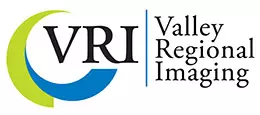Imaging Procedures & Preparation
-
Breast MR
-
According to the American Cancer Society, women age 40 and older should have a mammogram every year and should continue to do so for as long as they are in good health.
- Current evidence supporting mammograms is even stronger than in the past. In particular, recent evidence has confirmed that mammograms offer substantial benefits for women in their 40s. Women can feel confident about the benefits associated with regular mammograms for finding cancer early. However, mammograms also have limitations. A mammogram can miss some cancers, and it may lead to follow up of findings that are not cancer.
-Women should be told about the benefits and limitations linked with yearly mammograms. But despite their limitations, mammograms are still a very effective and valuable tool for decreasing suffering and death from breast cancer.
-Mammograms should be continued regardless of a woman's age, as long as she does not have serious or chronic health problems.
-
Mammography
-
Before scheduling a Digital Mammogram, the ACS and other specialty organizations recommend that you discuss any new findings or problems in your breasts with your Physician. In addition, inform your Physician of any prior surgeries, hormone use and family or personal history of breast cancer.
Do not schedule your Digital Mammogram for the week before your period if your breasts are usually tender during this time. The best time is one week following your period. Always inform your Physician or x-ray Technologist if there is any possibility that you are pregnant.
Do not wear deodorant, talcum powder or lotion under your arms or on your breasts on the day of the exam. These can appear on the Digital Mammogram as calcium spots. Describe any breast symptoms or problems to the Technologist performing the exam. If possible, obtain prior Mammograms and make them available to the Radiologist at the time of the current exam. In addition, before the examination you will be asked to remove all jewelry and clothing above the waist and you will be given a gown or loose-fitting material that opens in the front.
-
General Radiation
-
-Creatinine and GFR calculations will be evaluated as needed prior to giving IV contrast to patients.
-IVP - Patient must pick up an oral prep kit with instructions at least 1 day prior to exam.
-DEXA/Bone Densitometry - No contrast (dye) or barium in the last 10 days. No Nuclear Medicine studies in the last 10 days.
-
Ultrasound
-
Abdomen/Gallbladder - Nothing by mouth 8 hours prior to exam.
-Aorta - Nothing by mouth 8 hours prior to exam.
-Renal - 8oz. water 30 minutes before the exam. Hold bladder.
-Pelvis - 64 oz. water 1 hour before exam. Hold bladder full.
-Appendix - Nothing by mouth 8 hours prior to exam.
- Pylorus - Need to bring a bottle of Pedialyte. Hold last feeding 4 hours.
-OB 1st Trimester - 16 oz. water 1 hour before exam. Hold bladder full.
-OB 2nd and 3rd Trimester - No prep.
-All other U/S exams - No prep.
-
Nuclear Medicine
-
-Hepatobiliary - Nothing by mouth after midnight.
-Gastric Emptying - Nothing by mouth after midnight.
-Bone Scan - Force fluids beginning evening before exam.
-Renal - No food after midnight; drink normally.
-Thyroid Uptake and Scan - Nothing by mouth after midnight. No IV contrast studies within 30 days. No thyroid hormones (Synthroid, etc.) for 3 weeks prior to the exam.
-Thyroid Scan - No IV contrast studies within 30 days. No thyroid hormones (Synthroid, etc.) for 2 weeks prior to exam. No seafood 2 days before.
-All other Nuclear Medicine exams - no prep required.
-
MRI
-
-Sedation: VRI does not provide sedation for patients. If a patient wishes to be sedated or relaxed prior to their exam, they should discuss medication options with their referring Physician prior to their visit. If the patient chooses to be medicated for the exam, a driver is required to provide transportation to ensure the patient's safety.
-MRI cannot be performed on patients with a cardiac pacemaker, some cardiac valves and stents, otologic implants, implanted neurostimulator, non-titanium aneurysm clips in the head, pregnancy (in some cases), metal in body or exposure to welding.
-
CT
-
-Creatinine and GFR calculations will be evaluated as needed prior to giving IV contrast to patients.
-All CT exams requiring IV contrast - no food or fluids 6 hours prior to IV contrast.
-Abdomen/Pelvis - Patient must pick up an oral prep kit with instructions at least 1 day prior to the exam.
-
DEXA
-
What do my DEXA results mean?
The test compares your bone mineral density (BMD) to that of a "young adult" at peak bone strength and to people of your same age, called "age-matched". The difference between your result and that of a "young adult" is given as a T-score. This information, along with other factors, helps doctors in making a diagnosis. The following T-scores define the amount of bone loss:
• Normal: T-score above -1
• Osteopenic (low bone density): T-score between -1 and -2.5
• Osteoporosis: T-score below -2.5
Your test results combined with other factors give you and your doctor an overall risk of fracture. Knowing your risk of a fracture is important, because there are many ways to prevent osteoporosis and to reduce fracture risks. After reviewing your DEXA Scan results your doctor may suggest a number of steps important in building bone strength. Suggestions may include: exercise, changes in diet, hormone therapy, or other medicines known to improve bone strength.

